Energy ≠ Electricity Energy is the ability to do work Energy is abundant in nature, but not always readily available to do work Electricity is one form of energy Electricity is a finite resource | 4 Economic Principles 1. People make choices by balancing the costs and benefits of a choice 2. The economy is the sum of all people’s past and present choices which influence future choices 3. Incentives can be positive or negative 4. Choices have future consequences that can be positive or negative, and intentional or unintentional | Key Terms Needs: necessities for survival
|
For ease of understanding, the numbers on this page have been rounded. They do not perfectly reflect actual CBS financial data. | ||
Energy Drives the EconomyEnergy is essential for modern life. Everything including farming, cooking, lighting, comfort, communication, mobility, production of goods, all rely on energy, often in the form electricity at some point.
Click here to learn how to calculate how much you spend on energy | |
| Energy is the Economy Because the availability of energy drives almost every aspect of the economy, it is best to think of energy and economics as one concept rather than two. If energy is economics, then economics is energy. Since this is the case, not only is energy essential, it is also a geopolitical concern. |  |
| All Economies Exist on Spectrum Since energy is so important, the energy economy is less competitive. In a perfectly competitive market, there are very few barriers to entry and the number of suppliers can be almost infinite. Common agriculture products, like corn, are close to this end of the spectrum. On the opposite end are monopolies. Monopolies consist of just one supplier who meets all of the demand, allowing them to set the price as they see fit. Most utilities are monopolies in the areas that they serve. | 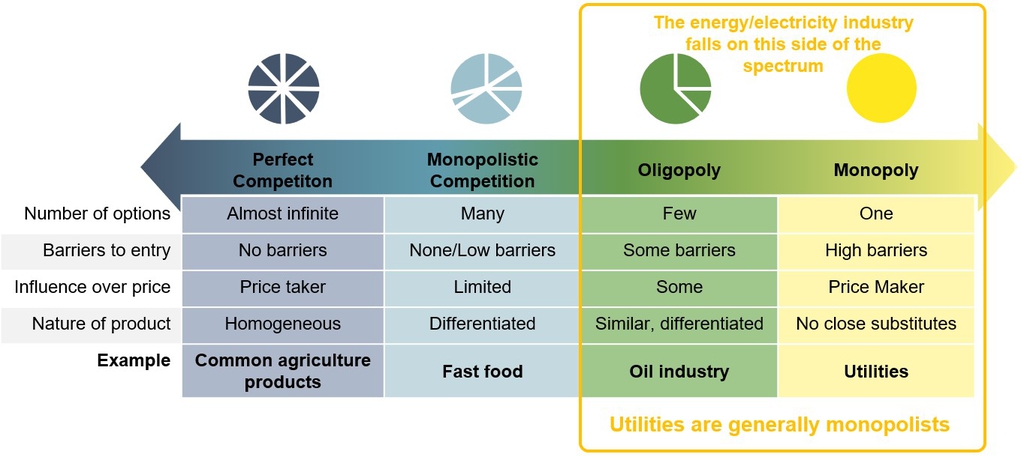 |
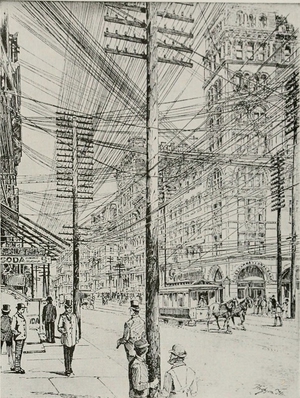 | But aren't Monopolies Bad? In general, yes. However, in industries that require large networks of equipment, competition results in redundancy, higher costs, and in the case of electricity, safety risks. “Wires snapped on a regular basis as a result of over tension, wind, or ice weighing them down. The electrical wires carried a significant charge, but the other wires carried electricity as well. As wires snapped and lashed across streets, smashing against buildings, thrashing about, spraying sparks in all directions, blocks were rendered impassable until power to the downed lines could be cut." Without a Competitive Market, Regulators Enforce Economic Efficiency
|
There are Three Common Models of Utility Ownership... 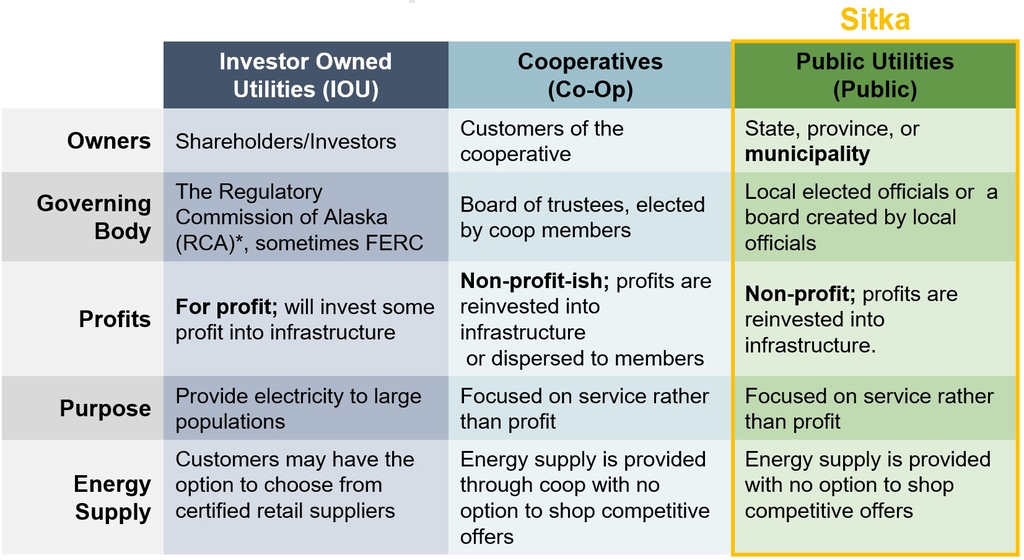 | and over 3,000 utilities in the U.S
|
The role of any utility is to design an system that can meet the demand for electricity. | |
Interconnected grids like large regional grids are able to purchase and sell power from neighboring communities to meet electricity needs and offset costs when there is surplus. However, Sitka's grid is an islanded microgrid, which means it is not interconnected and must meet all of the demand independently. Learn more about Sitka's grid here. | 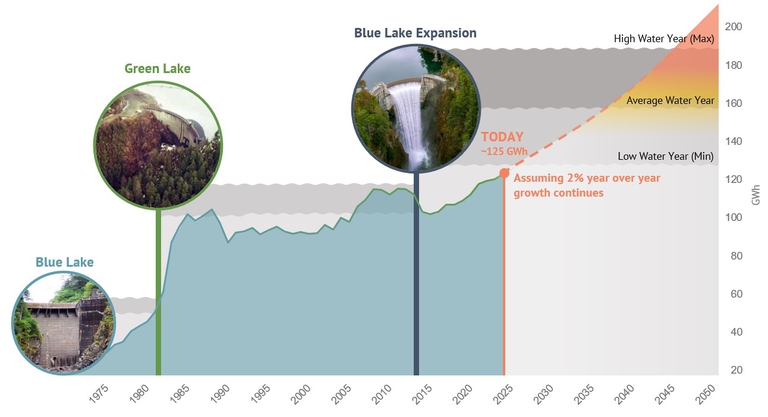 |
| What should a well-functioning system look like? A well functioning electric grid must be:
|
| Different considerations can tip this scale in multiple directions... | and this balance must be maintained over time. |
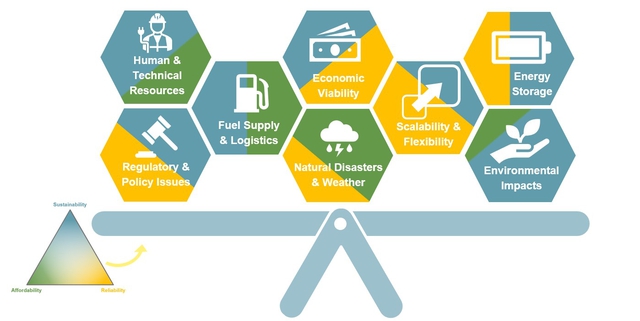 | 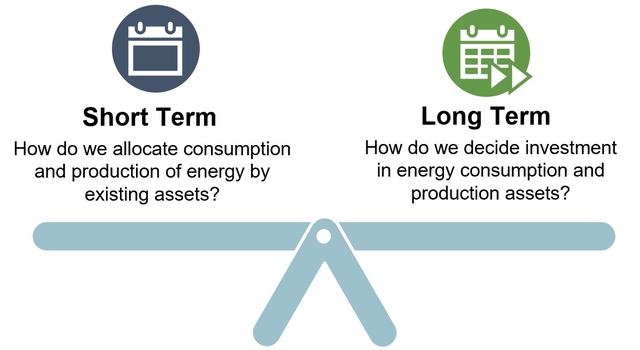 |
Global and Local Economics Impact the Cost of Service | ||
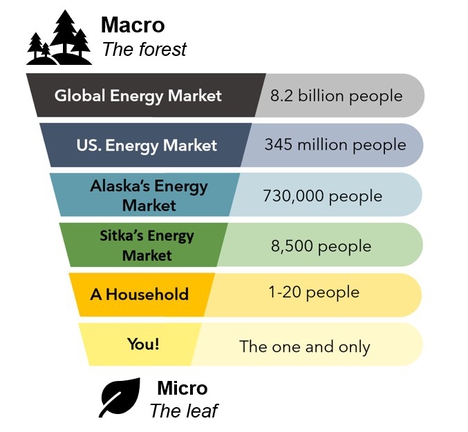 | 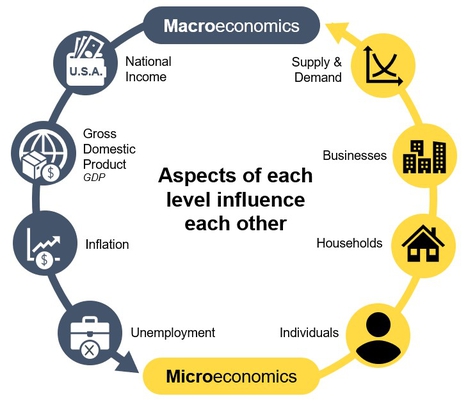 | |
| The cost of service of a utility is impacted by both the scale of the utility, as well as local and global economic factors. Electricity prices generally reflect the cost to build, finance, maintain, and operate power plants and the electricity grid. Some for-profit utilities also include a financial return for owners and shareholders in their electricity prices. There are eight major cost factors that can impact the total cost of service. 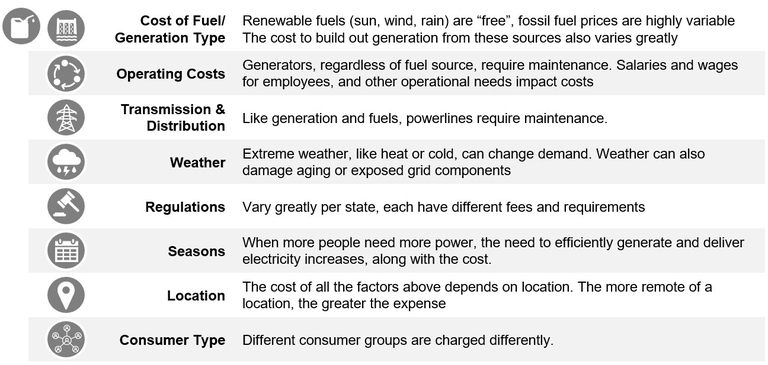 | ||
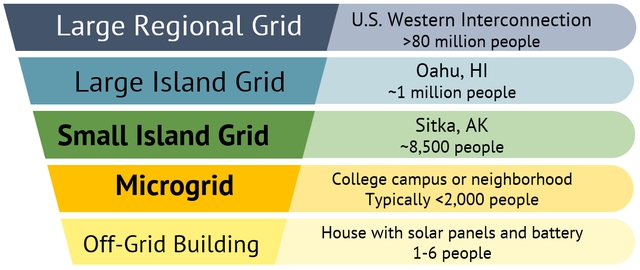 | In general, the benefits that come with economies of scale require the sacrifice of some level of self sufficiency and independence and vice versa. Sitka, which is a not-for-profit (publicly owned) islanded, large microgrid, experiences the influence of these eight cost factors differently than most grids in Alaska or the rest of the U.S., but it is far more independent and self sufficient than those grids. For example, because Sitka's grid uses the local renewable resource of rain and is such a small grid, power is very reliable and outages are much shorter than in many places. | |
The benefits and drawbacks of Sitka's Grid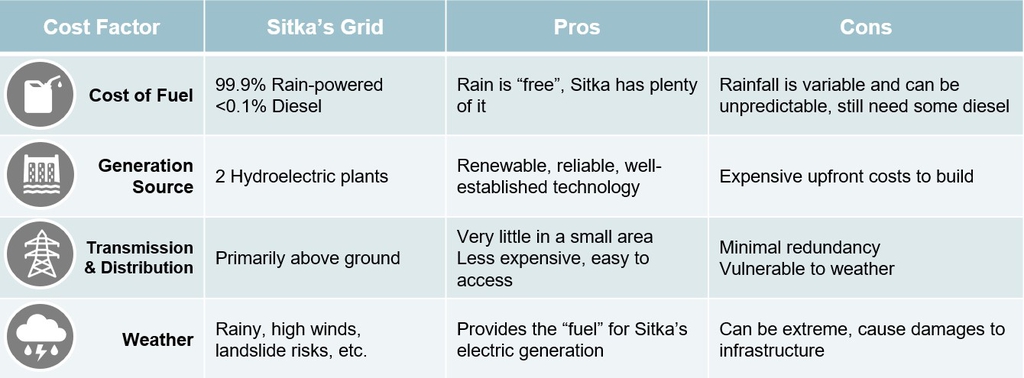 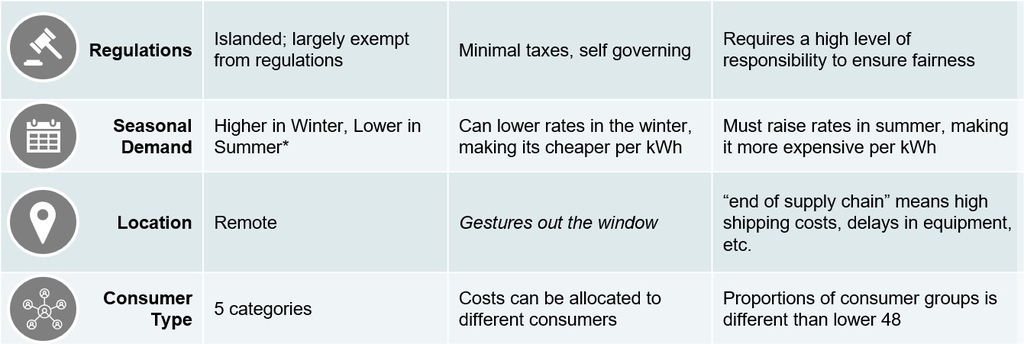 | ||
| A little more about fuel: If hydropower is unavailable, the diesel generators must be used. Each year, CBS budgets for fuel for generator maintenance, planned outages, and short unplanned outages. If this amount is not enough and more diesel must be used, this cost is passed on to consumers. Fuel is the only cost factor that is allowed to be passed on to consumers entirely. That is why in communities that do not have renewable energy experience frequent, sometimes month to month changes to rates as oil prices fluctuate. | |
To understand Sitka's Cost of Service, Imagine a Pie.
| |
| Revenue Requirement: Any utility's total cost of service depends on the revenue requirement (RR) the revenue requirement is the amount necessary to pay all expenses and achieve an adequate return. Fortunately, as a municipally owned utility, some aspects that contribute to the revenue requirement are not applicable, like return on investment or taxes. | 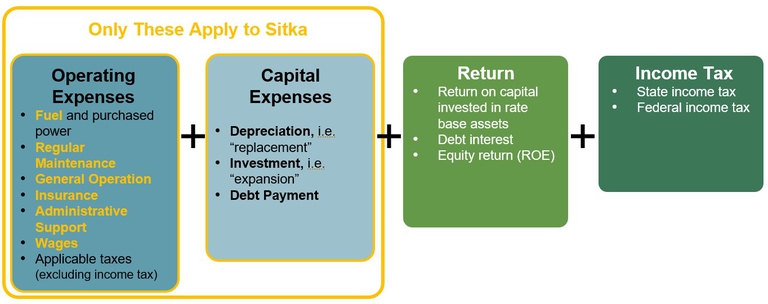 |
Sitka's Revenue Requirement How big is Sitka's Pie? | |
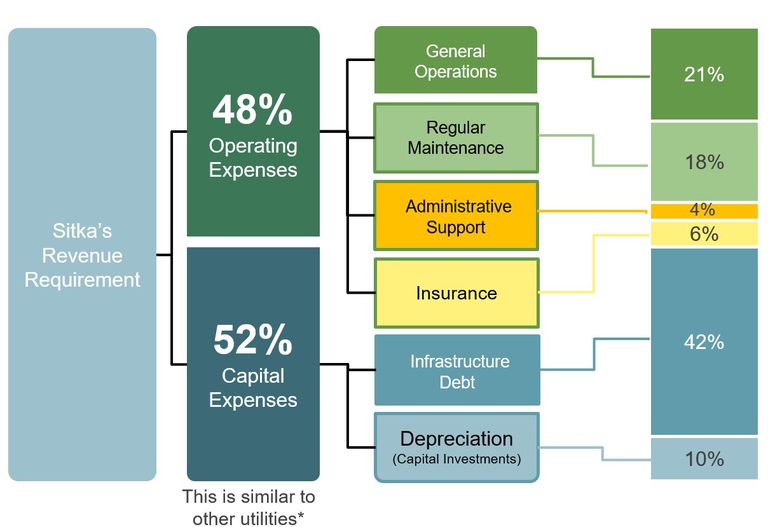 | Sitka's revenue requirement is approximately $19.5 million per year. It is split between capital expenses (52%) and Operating expenses (48%). This is comparable to other utilities*. 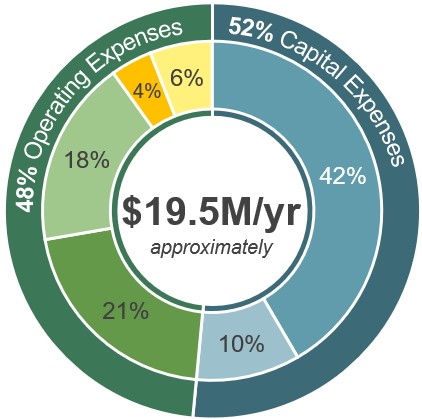 *Statistica via EIA data, 2024. |
This revenue requirement is then divided between customer groups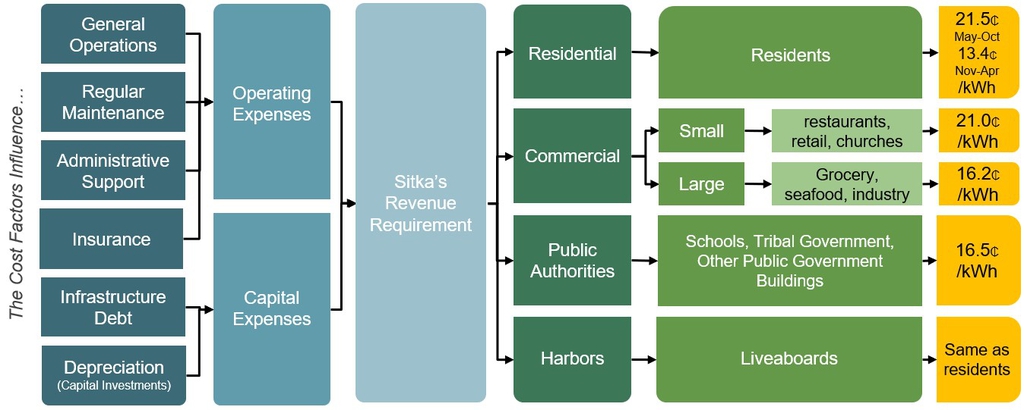 | |
How is the revenue requirement divided between groups? How is the pie sliced? To determine how much of the revenue requirement each customer type is responsible for, allocation factors are used. Allocation factors are developed by analyzing the cause-and-effect relationships between different cost categories and characteristics. If the revenue requirement was divided equally, rates for everyone would be almost 26¢/kWh! | Examples of Allocation Factors Include:  |
| Rates are Designed on Two Broad Concepts It is an art as much as it is a science 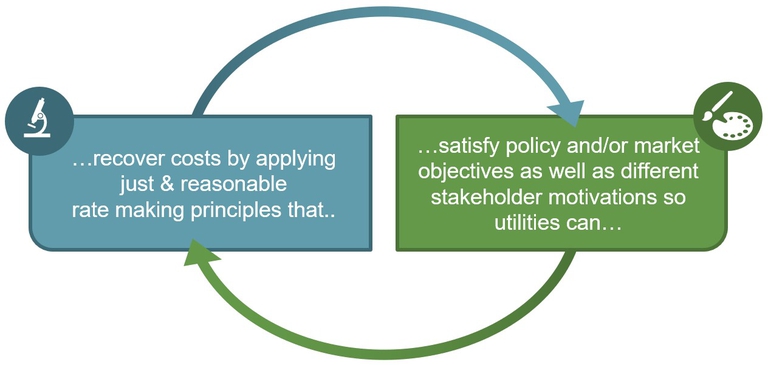 | In addition to allocation factors, rates are determined using Bonbright principles which further guide and refine how the revenue requirement responsibilities are divided amongst customers.
|
Common Rate Components If you look at your electricity bill, you will notice different types of charges that make up the total amount owed. These types of charges vary by customer class (residential, commercial). Surcharges for diesel, riders, and demand charges are some of the many that could appear on a typical electricity bill, but fixed charges and volumetric charges are always present. (NREL) | ||
| Volumetric Use Charge Volumetric charges are electricity costs that vary due to electricity use. The more electricity (i.e. kilowatt hours) used, the higher this portion of the bill. Volumetric charges can be a bundle of different elements (e.g. fuel, energy efficiency), or cover only the short-term variable costs a utility incurs. (NREL) | Volumetric Demand Charge Similar to volumetric use charges, volumetric demand charges are electricity costs that vary due to electricity use depending on how much is used at once. The more electricity (i.e. kilowatt hours) used at once, the higher this portion of the bill. This is more common on commercial bills and is rare on residential bills. | Customer Charge These charges are fixed and depend on customer class and does not change depending on use. It is useful for helping cover fixed costs like metering, billing, and other administrative aspects of a utility. |
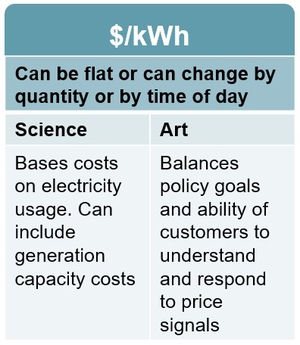 | 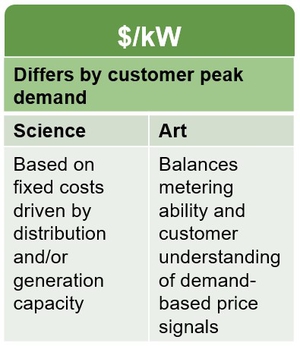 | 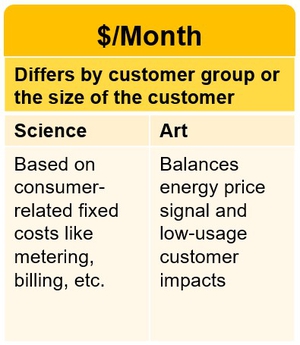 |
| Rate Making is not Perfect In a perfect world, the process of setting rates should result in a perfect match of meeting the revenue requirements. However, each cost factor that influence the cost of service change rapidly; it is not uncommon for rates to change monthly in some places where the price of fuel is highly volatile. In reality, revenue requirements are seldom met perfectly. This means rates should be reevaluated frequently and thoroughly to make sure the needs of customers now are met, as well as future customers. | |
|
|
How can the cost of electricity be reduced? | |||
Increase & diversify consumption for fixed costs | Increasing reliability and resiliency to avoid surprise costs | Don’t increase fixed costs to sell more | Conserve Energy and Use it more Efficiently |
 |  |  |  |
Bring more to eaters to help eat the pie in smaller bites By increasing diversifying the number of consumers helps break up the fixed cost over more customers making each customer responsible for less. This is a difficult strategy that takes time to implement at a large scale. | Invest in good ingredients, and an oven timer; you don’t want to burn it and must start over Any surprise cost due to equipment failure either anticipated or not, can be expensive. Strategically improving the grid to make it less vulnerable to interruptions and planning replacements before failure can minimize unforeseen costs from suddenly arising. | Don’t make a bigger pie than you need in hopes you have others to help eat it Increasing a fixed cost with the intent to be able to sell more without knowing for certain can lead to preemptive increases before the service is needed. Understanding how much electricity is needed and scaling services appropriately is the best way to avoid this scenario. | Take a smaller slice The most immediate way to lower the cost of electricity is to use less and/or use it more efficiently. Learn more about how to do this here! |
Prefer to Watch?Learn More about Sitka's Energy EconomicsCheck out the full webinar series here |
Sources: Cappers, P. & Satchwell, A. 2022. EVGrid Assist Webinar: Electric Vehicle Rates and Incentives. Lawrence Berkeley National Laboratory. |
Schedule an Energy Workshop!
Want to be more involved?
 (1).png?width=1024)
To be considered at the next Assembly Meeting, submit applications to the Clerk's Office today!